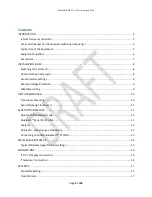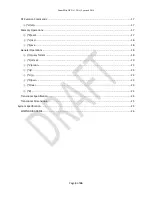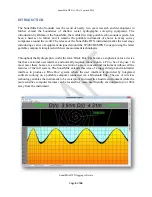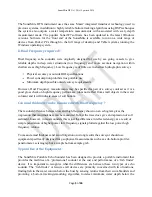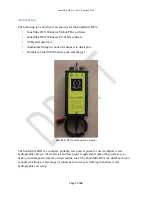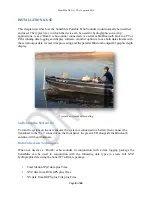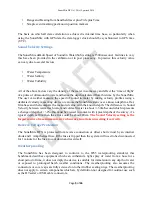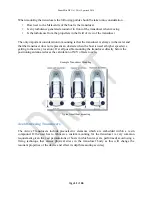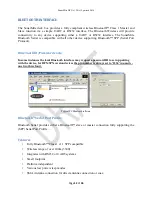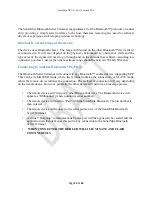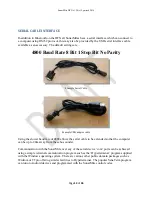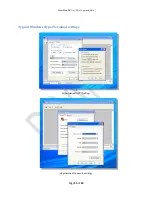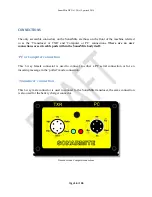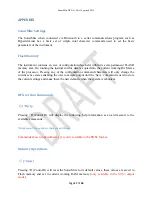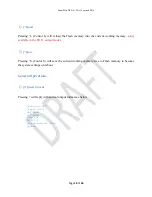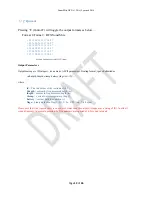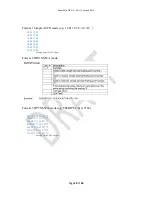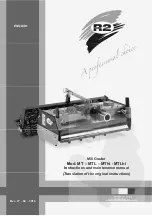
SonarMite DFX v1.20 (c) Lymtech 2016
Page
5
of
26
The SonarMite DFX instrument uses the same 'Smart' integrated transducer technology used in
previous systems, in addition to highly reliable bottom tracking algorithms using DSP techniques
the system also outputs a water temperature measurements with associated with every depth
measurement made. The popular SonarW7 software has been updated to the latest Windows
versions. Software for the 'front end' of the SonarMite is available to run on a wide range of
devices from Pocket PCs through to the full range of desktop and Tablet systems running the
Windows operating system.
Is Dual Frequency required ?
Dual frequency echo sounders were originally designed for use by sea going vessels to give
reliable depths in deep water situations (low frequency) and more accurate navigation within
shallow areas (high frequency). Low frequency is of little use in shallow hydrographic surveys
Physical accuracy is outside IHO specifications
Power consumption prohibits true portable use
Minimum depth possible outside survey requirements
However, Dual Frequency measurements may be specified as part of a survey contract as it is a
good gross check on high frequency performace (does not reflect from small objects in the water
column) and it will indicate areas of soft bottom.
Can mud thickness can be measured with Dual Frequency ?
The residual difference between low and high frequency shown on an echogram gives the
impression that mud thickness can be measured. In fact the trace does give an impression of soft
sediment, however, in most sounders this is just the difference in reflected energy as a result of
simple penetration of higher power low frequency signals plotted against the low power high
frequency returns.
To measure mud thickness and avoid litigation on wrong results the surveyor should use
equipment specifically designed for geophysical measurements such as a sub-bottom profiler,
penetrometer, seismograph or a simple bottom sample grab.
Typical Use of the Equipment
The SonarMite Portable Echo Sounder has been designed to provide a portable instrument that
provides the facilities of a „professional‟ sounder at the cost and performance of a „fish finder‟
device. It is important to recognize what the differences are between these two types of echo
sounder. The „fish finder‟ or leisure craft devices are primarily concerned with two functions,
finding fish in the water column below the boat by sensing returns from their swim bladders and
providing a bottom tracking/smoothing algorithm to detect minimum water depth below the


